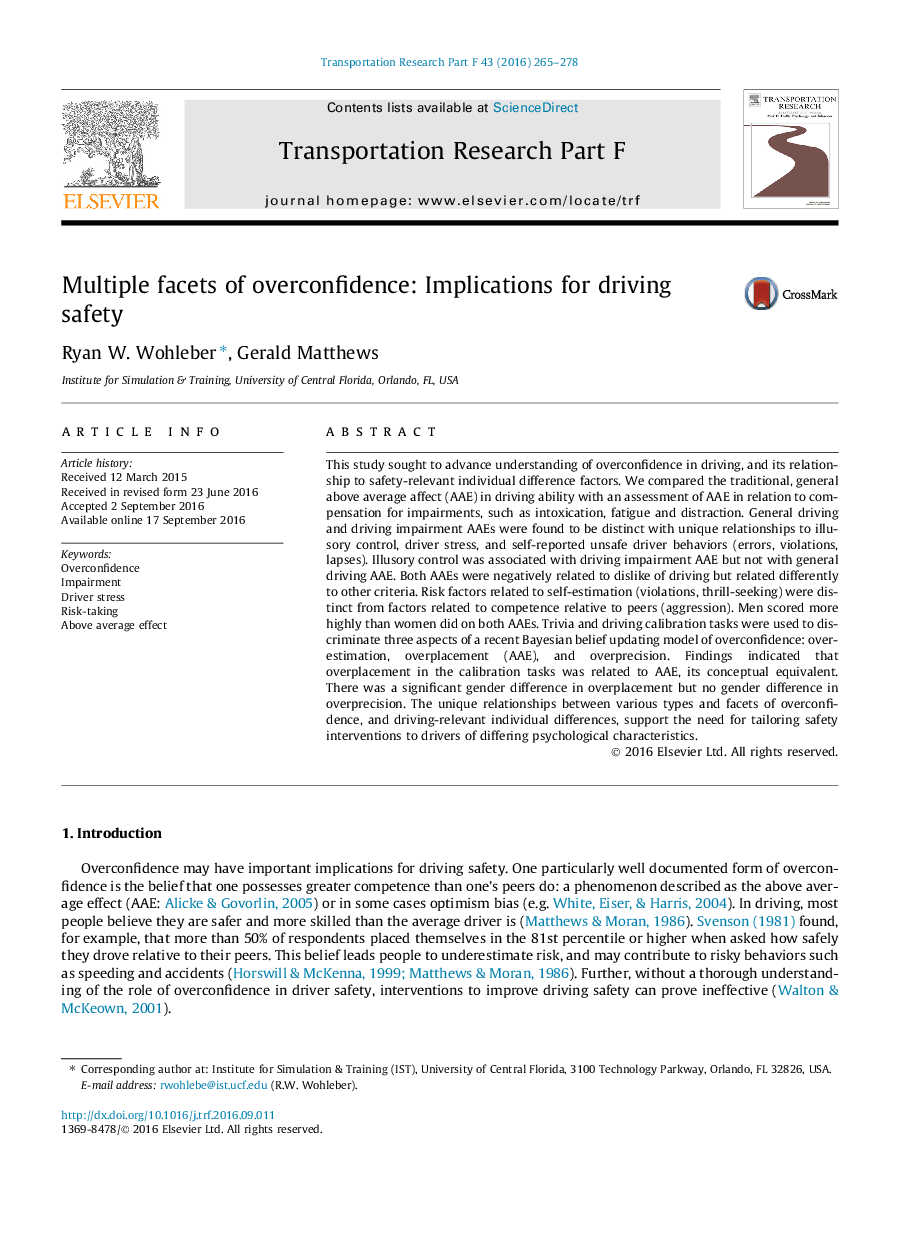| کد مقاله | کد نشریه | سال انتشار | مقاله انگلیسی | نسخه تمام متن |
|---|---|---|---|---|
| 5037489 | 1472442 | 2016 | 14 صفحه PDF | دانلود رایگان |
- Above average effect (AAE) predicted driver error over and above other predictors.
- AAE in compensating for impairments was distinct from AAE in general ability.
- AAE in general ability and coping with impairments was larger in men than in women.
- A multi-faceted approach to overconfidence may improve driver safety interventions.
This study sought to advance understanding of overconfidence in driving, and its relationship to safety-relevant individual difference factors. We compared the traditional, general above average affect (AAE) in driving ability with an assessment of AAE in relation to compensation for impairments, such as intoxication, fatigue and distraction. General driving and driving impairment AAEs were found to be distinct with unique relationships to illusory control, driver stress, and self-reported unsafe driver behaviors (errors, violations, lapses). Illusory control was associated with driving impairment AAE but not with general driving AAE. Both AAEs were negatively related to dislike of driving but related differently to other criteria. Risk factors related to self-estimation (violations, thrill-seeking) were distinct from factors related to competence relative to peers (aggression). Men scored more highly than women did on both AAEs. Trivia and driving calibration tasks were used to discriminate three aspects of a recent Bayesian belief updating model of overconfidence: overestimation, overplacement (AAE), and overprecision. Findings indicated that overplacement in the calibration tasks was related to AAE, its conceptual equivalent. There was a significant gender difference in overplacement but no gender difference in overprecision. The unique relationships between various types and facets of overconfidence, and driving-relevant individual differences, support the need for tailoring safety interventions to drivers of differing psychological characteristics.
Journal: Transportation Research Part F: Traffic Psychology and Behaviour - Volume 43, November 2016, Pages 265-278
